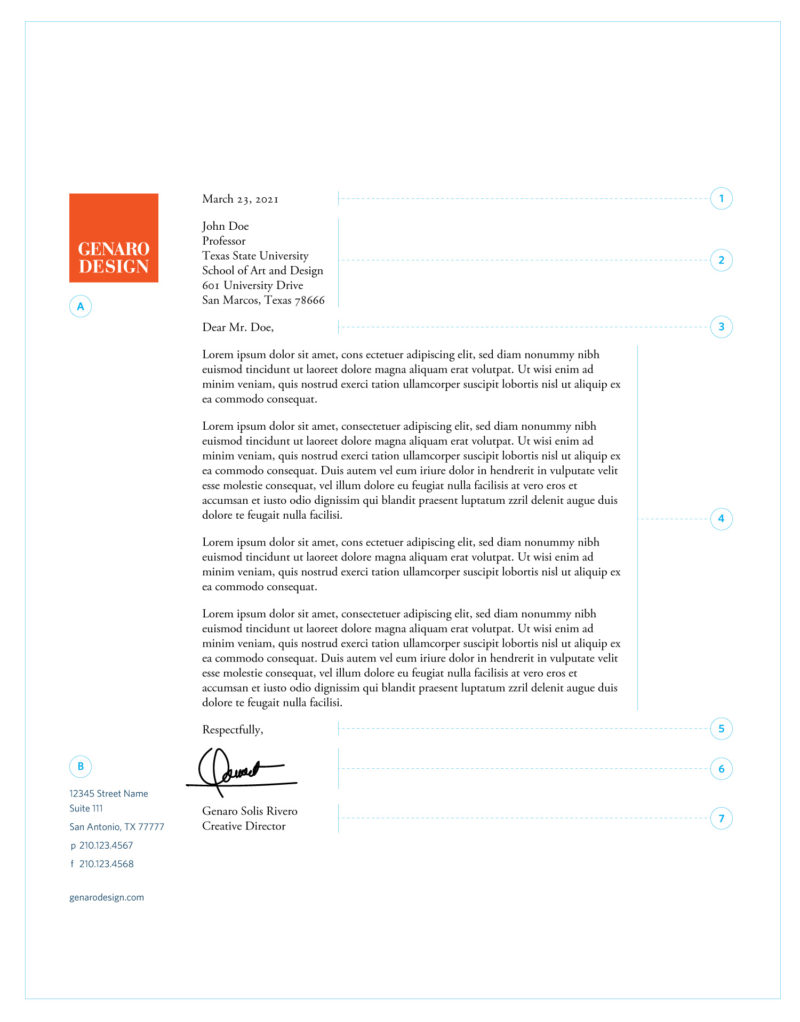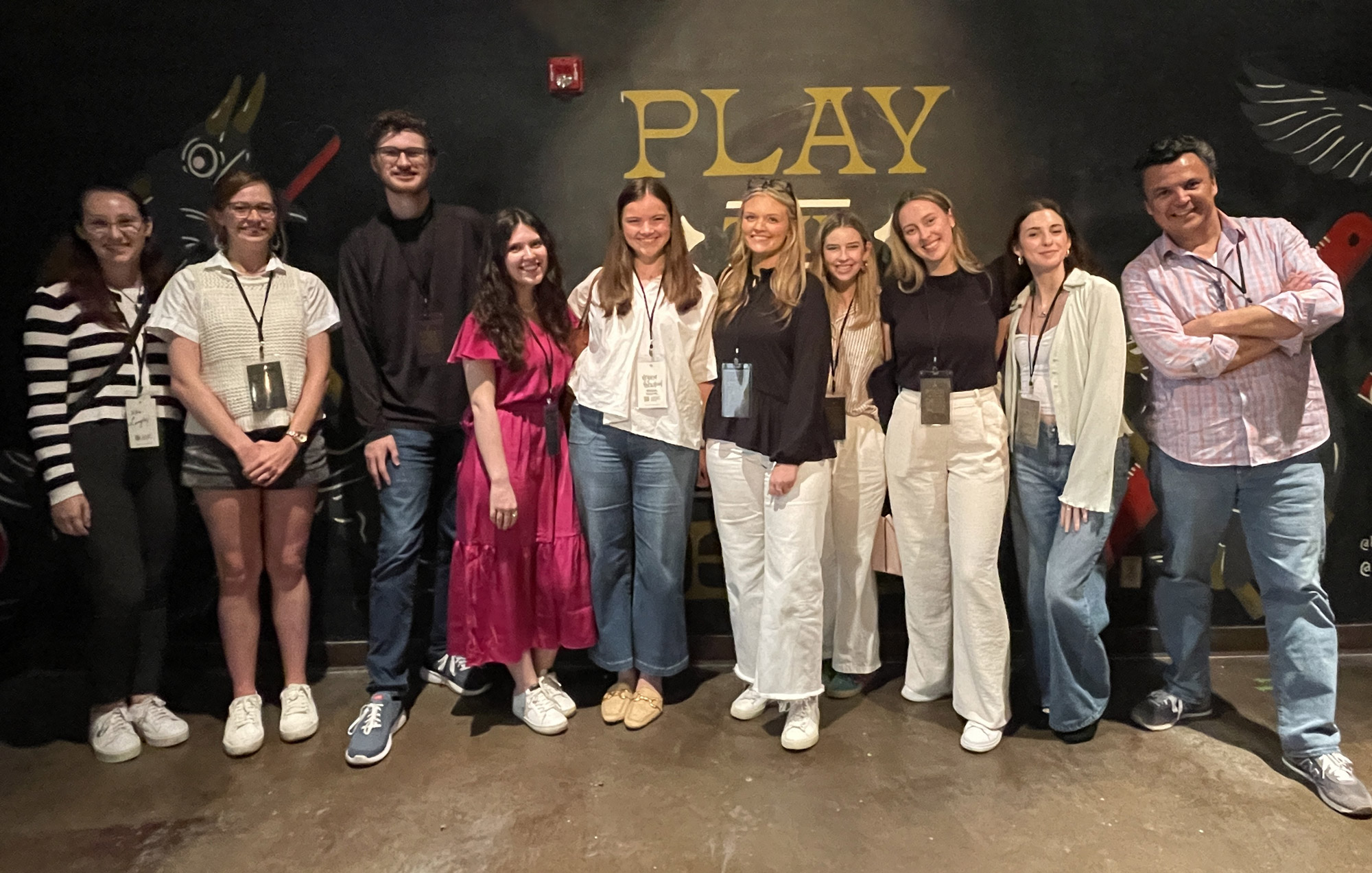Manners are the happy way of doing things.
Ralph Waldo Emerson, Behavior, in The Conduct of Life, 1860
The first time I heard about letter components was in typing class back in 1987. For the record, I learned how to type on those big, heavy, and black machines called typewriters. After countless hours of typing groups of letters that didn’t make sense, we were taught the parts of a letter. In other words, how to properly typeset a letter.
This is what a paragraph of a typical typing exercise looked like.
asdf jkl; asdf jkl; asdf jkl; asdf jkl; asdf jkl; asdf jkl;
asdf jkl; asdf jkl; asdf jkl; asdf jkl; asdf jkl; asdf jkl;
asdf jkl; asdf jkl; asdf jkl; asdf jkl; asdf jkl; asdf jkl;
asdf jkl; asdf jkl; asdf jkl; asdf jkl; asdf jkl; asdf jkl;
I am not sure if the motions of loading the paper into the typewriter, beginning typing, making a mistake, pulling the paper out, and throwing it into the trash hundreds of times before I got it right made it impossible to forget the parts of a letter or they were just well-taught. Although liquid paper had been invented, it was forbidden; we had to turn in spotless, wrinkle-free, and zero-mistake exercises. Furthermore, these skills were reinforced during my keyboarding class at Missouri Military Academy from 1990 to 1993.
From 2019 to 2023, I taught Senior Portfolio at Texas State University, and very few of my students knew or vaguely remember the components of such an important document. For my seniors, a well-addressed and typeset cover letter may have been their only chance for an interview appointment. It may have been their first client proposal or resignation letter for others. Although we may not follow the same format when writing e-mails, there will be a time when everybody will have to rely on this almost forgotten skill—the art of typing a letter—even if you ask ChatGPT to do it for you. You must learn the proper etiquette and components of a letter.

DESIGN
First of all, design your letterhead; it must have your logo or name and contact information if you can. Do not use regular paper for letterheads. They should be printed in higher-quality paper. Traditionally, letterheads are printed on 100% cotton paper with matching envelopes; however, there are many great alternatives, My favorite choices for stationery systems—letterhead, envelopes, and business cards—are Neenah® Paper lines, such as Classic Cotton®, Classic Crest®, Classic Columns®, Classic® Linen, or Royal Sundance®. Finally, my best advice for choosing the correct paper is to talk to a Graphic Designer or your local Paper Distributor—mine is Clampitt Paper in San Antonio, Texas.
A. LOGO
The logo is an essential part of your letterhead. It identifies the company or the person, and it comes in different sizes, shapes, and forms. If you do not have a logo, design one; hire one if you are not a designer.
B. CONTACT
The contact information on your letterhead should work cohesively with your style or brand. Typically, it will include a mailing address, phone number, and website. Personal letterheads would include the person’s name, title, and e-mail. Also, the contact information should not exceed 8–9 points, depending on the typeface. The content of the letter should be typeset between 10 to 12 points.
1. DATE
The date the letter will be presented, signed, or mailed.
2. ADDRESSEE
Information of who will receive the letter—the recipient. Include the recipient’s name, title, company name, and mailing address.
3. SALUTATION
Use proper titles and the recipient’s last name followed by a comma or a colon for more formal letters and use proper titles such as Mr., Mrs., Ms., Lt.Col., Maj., etc. Informal letters may be addressed using the recipient’s first name.
4. BODY
Keep the body of the letter short and concise. Organize the content into three main parts: introduction, content, and conclusion. The content is usually divided into three major statements or three main points.
5. CLOSING
Write a complimentary close such as: respectfully, sincerely yours, regards, faithfully, appreciatively, etc. End this section with a comma.
6. SIGNATURE
Leave a space for your handwritten signature.
7. NAME
Type the name of the person sending the letter, which may be accompanied by a title.
Cover photograph is used under CC license without any modifications other than cropping. Author: Markus Spiske
Montes de Oca Sicilia, Maria del Pilar. (2009). El Manual Para Escribir Bien. Mexico, D.F.: Editorial Lectorum S.A. de C.V.
Manners. (1997). In M. Miner, & H. Rawson, Rawson’s dictionary of American quotations. Hugh Rawson.
We are all apprentices in a craft where no one ever becomes a master.
Ernest Hemingway


